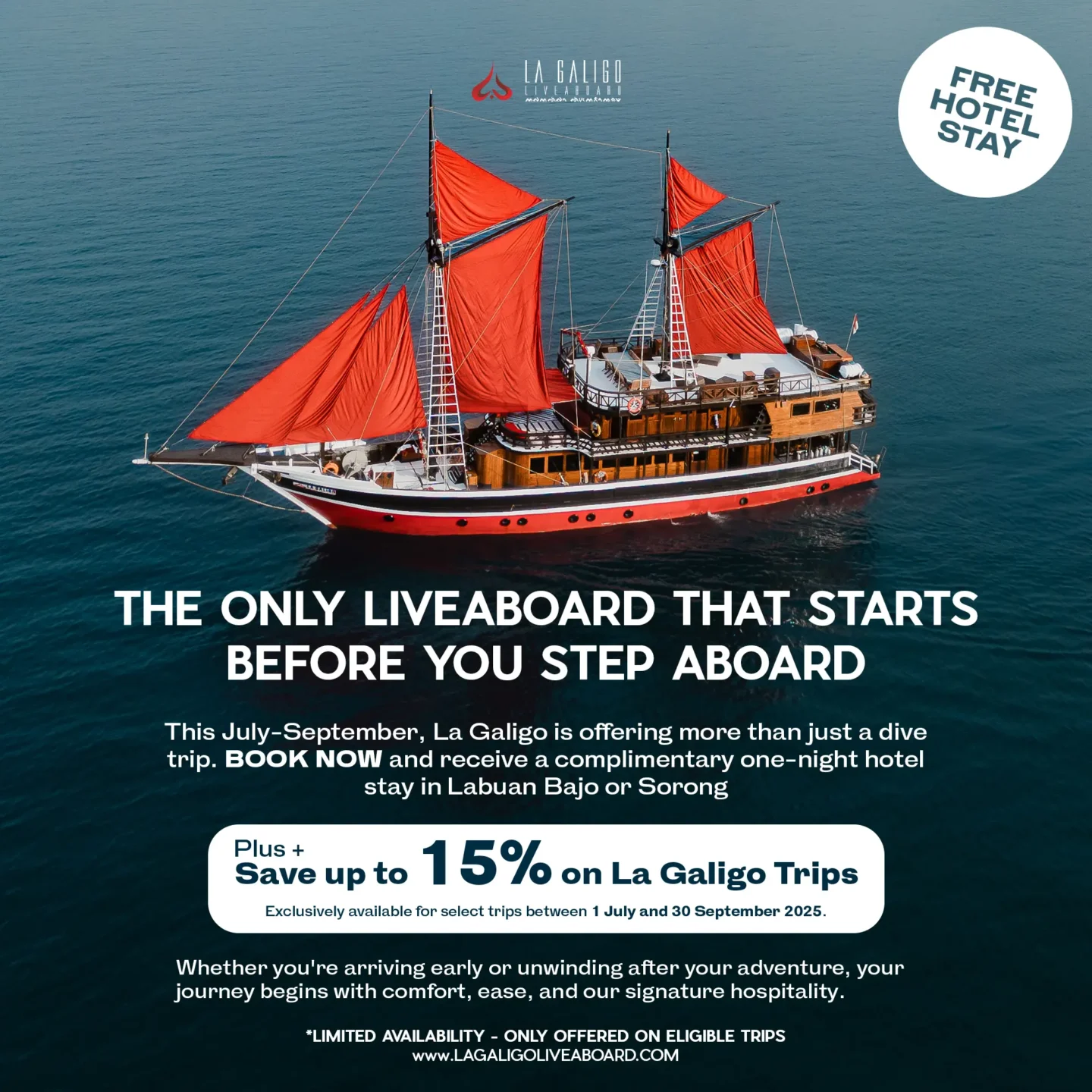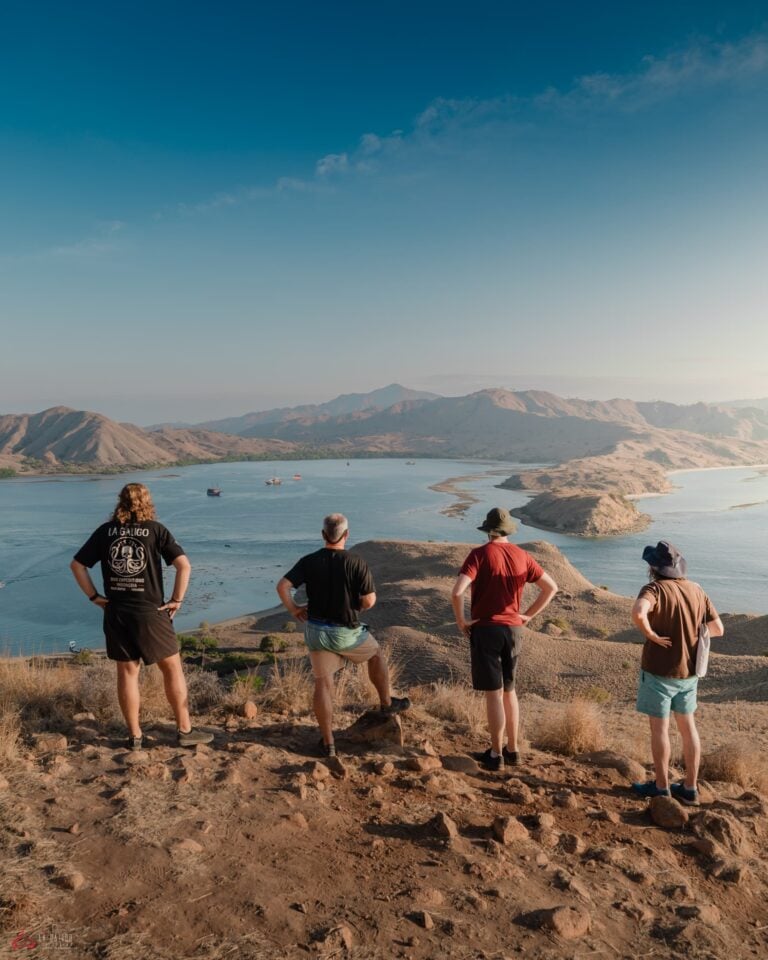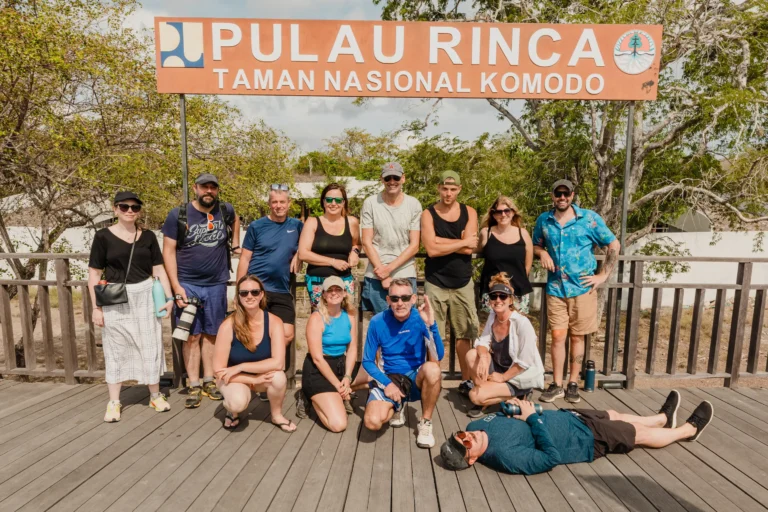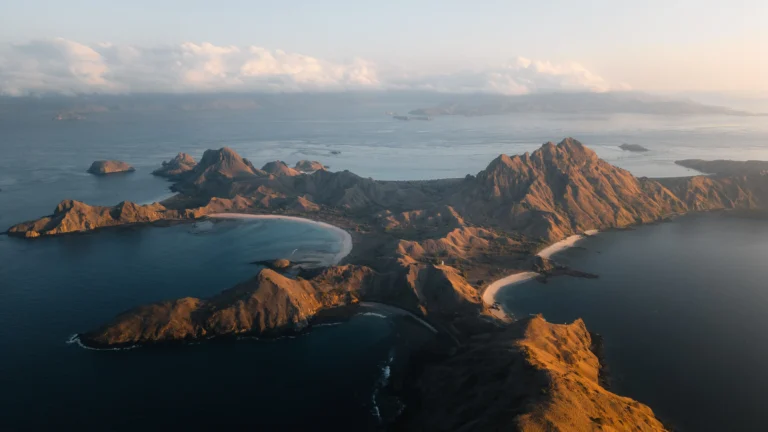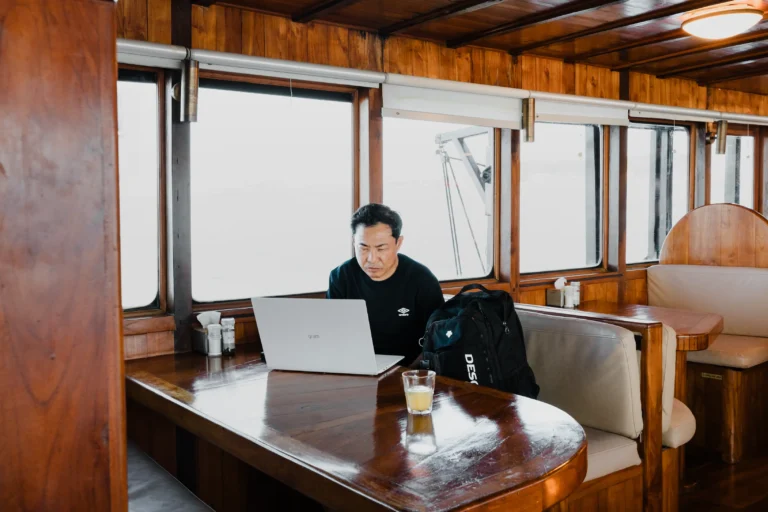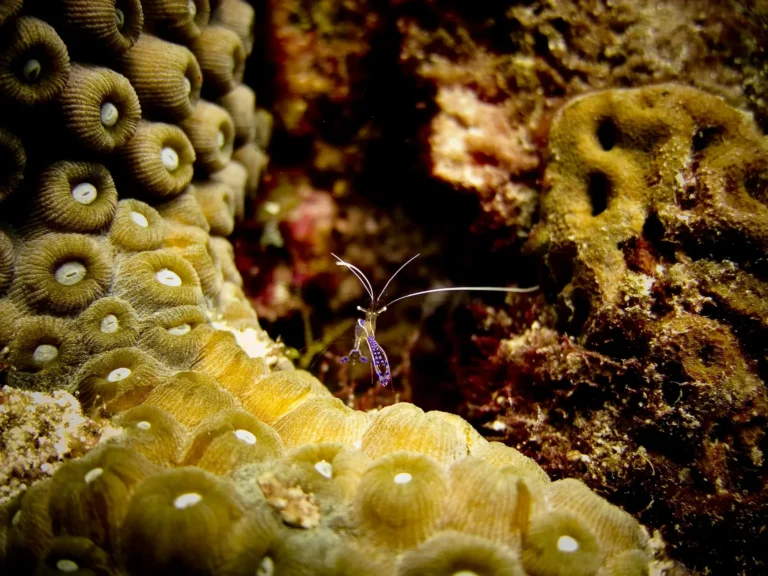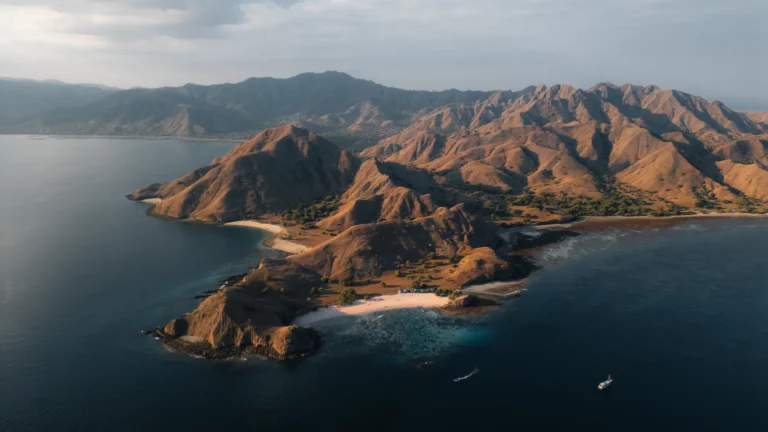If you’re a scuba diver, diving in Komodo National Park should be high on your list. This UNESCO World Heritage Site in Indonesia is one of the richest marine ecosystems in the world. With over 1,000 species of fish and more than 260 kinds of coral, it’s easy to see why divers and snorkelers from around the globe keep coming back.
There’s also something primal about Komodo. Maybe it’s the fact that you’re diving in waters patrolled by ancient giant lizards that look like they crawled straight out of the Cretaceous period. Or maybe it’s the currents; wild, surging torrents of life that rip through underwater channels like underwater rivers.
Either way, diving Komodo isn’t just another pin on the dive map. It’s a full-body baptism into one of the planet’s most pulse-pounding marine environments.
Table of Content
- What You Can Expect Diving in Komodo
- Above the Surface: Jurassic Vibes
- Final Thoughts: Is Komodo Right for You?
What You Can Expect Diving in Komodo
Challenging Currents
The waters of Komodo aren’t for the faint-hearted. Komodo sits right in the Indonesian Throughflow, a kind of underwater freeway where the Pacific and Indian Oceans trade water, nutrients, and a lot of momentum.
That means strong currents, wild drifts, and occasionally, moments where your heart is thumping as fast as your fins.
But don’t let that scare you off.
There are beginner-friendly sites in Komodo, and plenty of operators (the good ones, at least) know how to time dives with the tides and pick sites that match your comfort level. Dive sites like Siaba Besar, known as the “Aquarium,” offer gentle slopes and coral gardens perfect for newbies.
Even there, the marine life puts on a show.
Diverse Marine Life
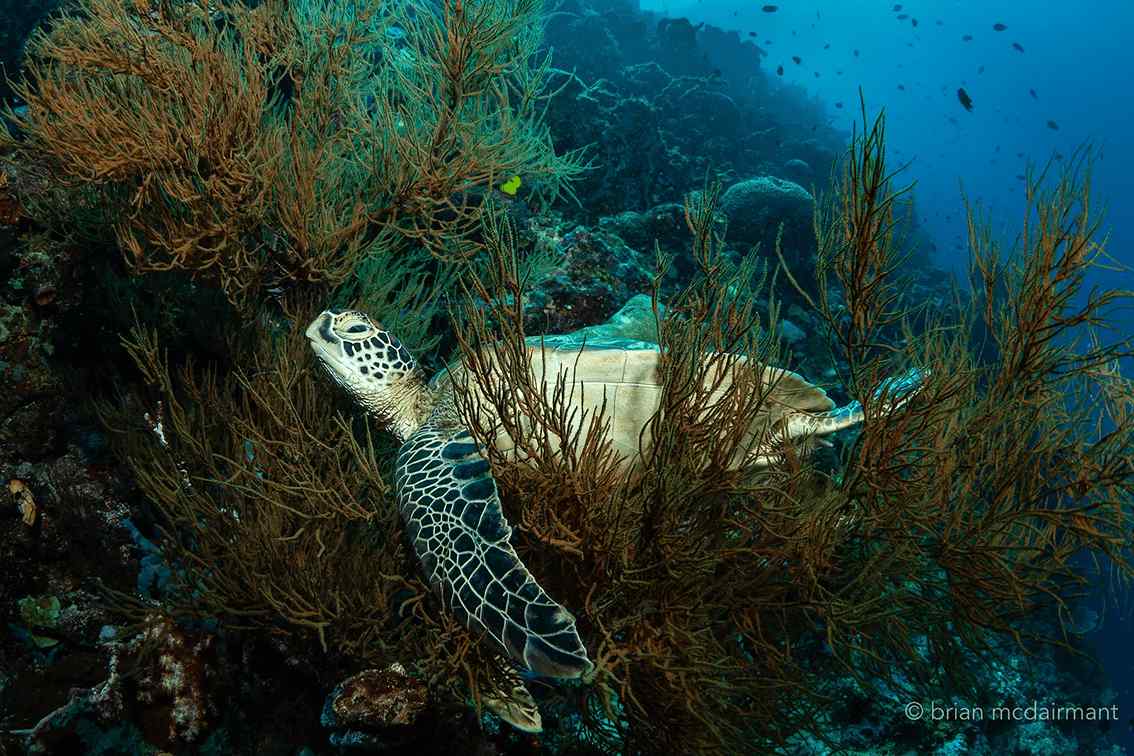
While you’re traveling through Komodo liveaboard, keep a watch out for these marine life species you might encounter while diving in Komodo:
Manta Rays
Manta rays are one of the most fascinating marine animals, and Komodo National Park is an excellent location to look for them. These gentle giants can grow to be up to 23 feet wide, making them one of the largest aquatic animals. You should have a good chance of seeing these graceful fish at dive sites such as Manta Alley and Mawan, where manta rays gather to feed on plankton.
Sharks
Sharks are another significant draw for scuba divers, and there are plenty of them in Komodo National Park. Whitetip sharks and blacktip sharks can be seen at dive sites like Castle Rock and Batu Bolong.
Turtles
Turtles can be seen at almost every dive spot in Komodo National Park. The most prevalent species are the green turtle and the hawksbill turtle, which can be found grazing on seagrass or dozing off on the ocean floor.
Octopus
Octopuses are fascinating animals that can be found hiding in crevices and coral formations throughout Komodo National Park.
Nudibranch
Nudibranchs are a type of sea slug known for their diverse colour and patterning choices. They are a popular subject for underwater photographers and can be found at almost every dive location in Komodo National Park.
Dolphins
Dolphins are always entertaining to watch, and you can often see them playing and leaping out of the water as you travel to various dive sites. If you’re really lucky, you might even see a gathering of dolphins while you’re underwater.
Komodo National Park is home to massive schools of fish, which can be an impressive sight to witness. Schools of trevally, fusiliers, and snappers can be found at dive sites such as Batu Bolong and Siaba Besar.
Pygmy Seahorses
Pygmy seahorses are small size organisms that are difficult to locate but well worth the time and effort. Look for them hidden within the coral structures at dive sites like Cannibal Rock and Batu Tiga.
Beautiful & Soft Corals
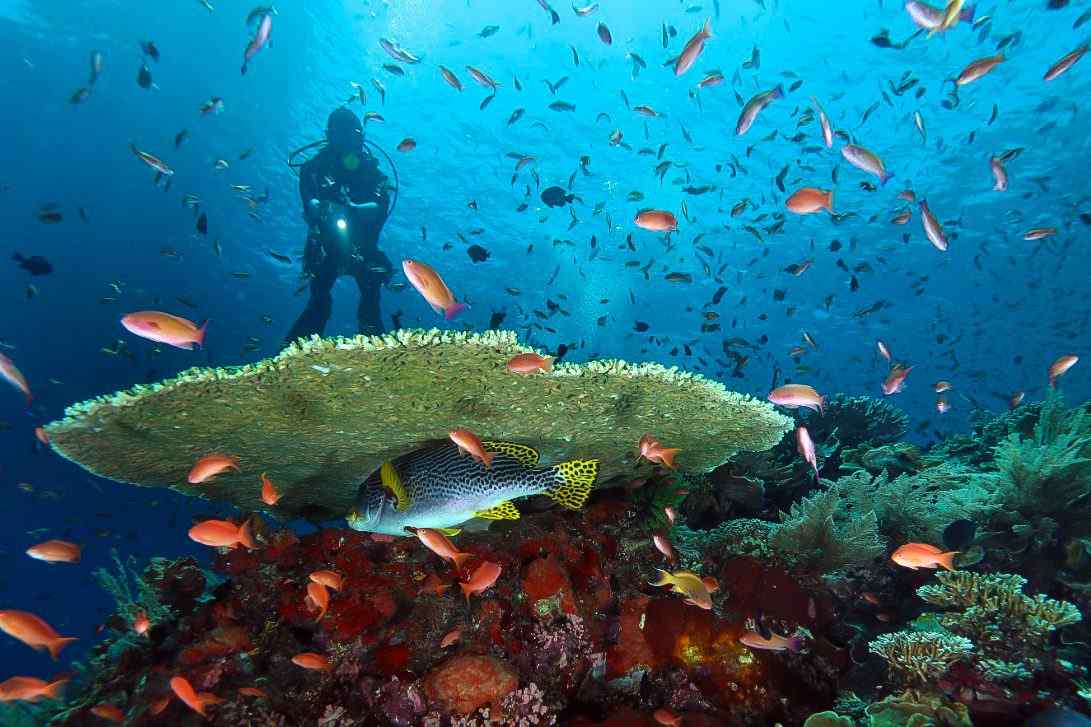
Komodo National Park is famous for its vibrant soft coral gardens, which come in a broad range of colours. Soft coral can be found in dive sites such as Tatawa Kecil and Batu Bolong.
Above the Surface: Jurassic Vibes
And when you’re not underwater?
There’s the jagged, sun-scorched landscape of Komodo and Rinca, where the Komodo dragons lurk around with the slow swagger of something that knows it’s at the top of the food chain. Trekking these islands between dives feels like walking through a lost world. Because in many ways, that’s exactly what it is.
Final Thoughts: Is Komodo Right for You?
Komodo has a reputation, sure. The currents here are legendary, and for good reason. But diving in Komodo isn’t about braving chaos; it’s about understanding the rhythm of the ocean and diving with it, not against it.
When you go with the right diving operator, the kind who knows these waters like the back of their hand, safety is built into every part of the experience. Our dive guides time each entry to the tides, read the conditions in real-time, and choose sites that match the group’s skill and comfort levels. There’s no ego in Komodo, just solid dive planning and respect for the sea.
If you’re already Advanced Open Water certified and have an experience in drift diving, you’re good to go. If not? No problem. There are plenty of beginner-friendly sites with calm conditions and stunning marine life, perfect for newer divers or anyone easing into their first Indonesian adventure. And if you’re thinking of stepping up your training before the trip, like getting comfortable with currents or picking up a few specialty dives, it’s a great way to boost your confidence before hitting the water.
So no, Komodo isn’t scary. It’s thrilling, sure, but in the best way. It’s a place where preparation pays off, and where each dive feels like stepping into a blue world full of movement, mystery, and moments you’ll never forget!

